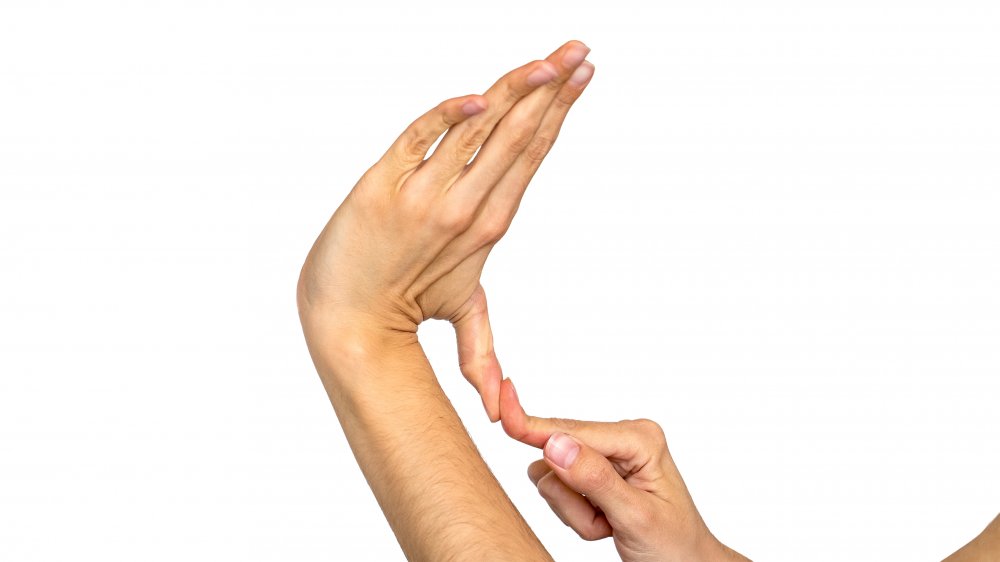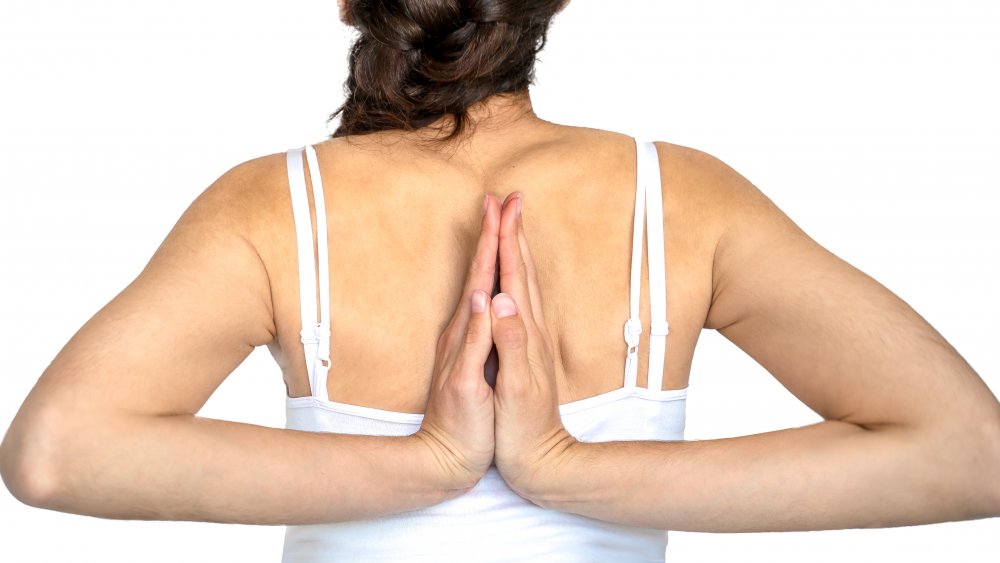What Does It Mean If You Are Double Jointed?
Some of us are more flexible than others, and we're made more aware of that fact when we watch dancers or contortionists — or even the people next to us in yoga class. But there are folks that are so flexible they make us flinch when they do things like bend their fingers back until they're at a 90-degree angle with their palm, or whose thumbs have kissed their forearms. That condition, which many of us call "double jointedness," is actually hypermobility, which demonstrates your body's ability to move beyond a typical range.
Hypermobility is a result of way connective tissues — or collagen — between the joints come together (via Cleveland Clinic). "You can have a physical hard stop — it can't go any further because something hits something — or you can have a ligament holding it in place. If you're born with looser ligaments, you'll be able to move it more," USC anatomist and vertebrate paleontologist Michael Habib tells the BBC.
Hypermobility can be a sign of an underlying conditiion
The Cleveland Clinic says hypermobility is a trait that can be found in about 20 percent of people. But because hypermobility is also a sign of weak joints, doctors are likely to ask someone who is more hypermobile than others to do something about the condition, because the condition can actually lead to physical injuries like shoulder and knee dislocations if things move too far, or are stretched to their limit on a regular basis. "Doctors will likely recommend physical therapy, activity modification and strengthening exercises," says orthopedic surgeon Michael Star. "These activities give much-needed stability to the joint."
Hypermobility has also been linked with rare genetic disorders like Ehlers-Danlos syndrome, which is why doctors may recommend further tests if hypermobility comes with other symptoms including skin that tears or bruises easily (via The Ehlers-Danlers Society).

